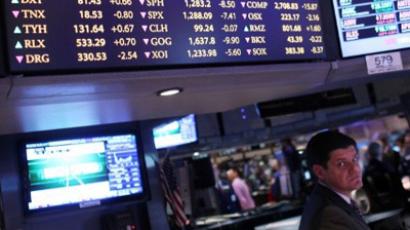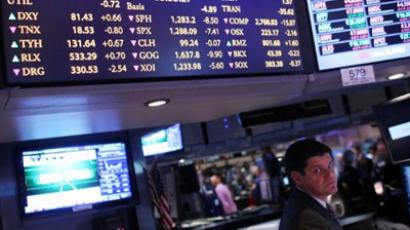Emerging market currencies on the up
The Russian rouble and other emerging market currencies have shown the best growth in the first month of 2012. Many investors are bullish, yet some cast doubt the increase will last for long.
Analysts say investors’ increasing appetite for risk means the Russian rouble and Brazilian real have gained 6% against the dollar since the start of the year. The Mexican peso and the Indian rupee are doing even better. Both currencies have risen 7%. In total most of 15 main emerging market currencies gained more than 5 percent against the U.S. dollar.In contrast, the euro, yen and pound gained less than 1.5% against the greenback.Some analysts believe the emerging markets’ currencies growth is because investors and fund managers are seeing new buying opportunities after sharp losses of the recent months. According to EPFR Global, during the last week fund managers invested a record sum of $4.4 billion into emerging markets since last April, expecting it to be a good investment.But specialists also warn the emerging market currencies remain risky, because local regulators are likely to intervene and halt national currencies’ further growth to support exports. Investors, in their turn, can also start withdrawing funds if risks increase.Steen Jacobsen from Saxo Bank believes the emerging currencies’ growth is rather the result of the fact “that both the Euro and the Dollar are engaged in printing money, which is always a solution. If you have a debt problem you create more debt to solve it. We have seen the US Federal Reserve indicating that it will print excessive amounts of money, and since July 1st last year the ECB balance sheet has expanded by 39%. So this is a good start for the emerging markets”. Steen Jacobsen thinks the US Dollar and Scandinavian currencies will be the ones to outperform in 2012. Mr. Jacobsen points out Scandinavian countries benefit from being in Europe Union but have their own currencies. “Sweden could become the new Switzerland”, adds Steen Jacobsen. And “the US economy is far better prepared to deal with the debt crisis, because US takes 70% of their funding from the bond market not from bank debt like Europe and Russia. If banks have problems we will not have enough funding from them. That will be the competitive advantage of the dollar”.Saxo Bank expects the US dollar to grow in the beginning of 2012 due to global uncertainty. And the Euro, will yield its position to the US dollar, Japanese yen and British pound, because the Euro crisis will peak in the first quarter.














